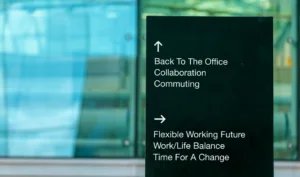
6 Ways to Reduce Cybersecurity Risks With Employee Onboarding
With so many organizations moving online, the way they recruit and welcome new talent is changing, too. Today, more employers hire digitally because it’s convenient,

With so many organizations moving online, the way they recruit and welcome new talent is changing, too. Today, more employers hire digitally because it’s convenient,

We publish a lot of articles at TalentCulture by terrific HR practitioners, innovators, and thought leaders. In fact, we’ve been sharing useful ideas from diverse

It’s a universal leadership challenge. In this new work-from-wherever world, how can we get the most from hybrid and remote teams? Will we find answers

Are you an extrovert? About half of the people in the U.S. are. But what exactly does that mean? The Myers-Briggs Type Indicator (MBTI) personality

These days, any employer that doesn’t lead with purpose is fighting an uphill battle. Why? Take a look at recent headlines. They’re filled with news

When the pandemic arrived in 2020, everyone’s definition of work changed in a heartbeat. Most people headed home, leaving their offices, cubicles, water coolers, and

A strong internal communications function is essential for every company, both culturally and operationally. It helps keep employees aware of relevant news and updates, excited

People often ask me which HR trends should be on their radar. It’s a fair question, because I organize two of the HR profession’s most

Three years ago, the pandemic lockdown triggered a wave of relentless workplace change. Over time, we’ve all had to revamp our attitudes, expectations and behaviors

At what point in a career does learning stop? Hopefully, never! Most business and technical professionals realize that becoming proficient in a job and becoming

Sponsored by Social Flowers What a difference three years can make! I’m sure that’s what many remote employees are thinking these days. Before the pandemic,

“Absence makes the heart grow fonder.” No doubt, you’ve heard this familiar quote. You may even have said it to encourage others who are separated

Running a business from home can be an exhilarating and highly rewarding experience. But remote business owners know that leading from a home office also

Work Norms Are Changing In 2019, about nine million U.S. civilians worked from home on a regular basis. Then the pandemic arrived. Nearly overnight, remote

We don’t need research to tell us the future of work will be much different from pre-pandemic norms. But Covid isn’t the cause. Disruption was

In the past, many employers dismissed the idea of building an international workforce. Those who could attract local talent considered it unnecessary. Others didn’t have

When the pandemic suddenly forced millions of people to work remotely, employers weren’t sure what to do next. Because the transition was nearly instantaneous, this

Have you noticed that workforce engagement and motivation are slipping? You’re not the only one. In April, Gallup confirmed that U.S. workforce engagement declined from

Friendships are an essential aspect of work life. But friendships among remote employees aren’t the same as relationships among people who spend time together in

Early in 2020, without warning, the pandemic made distributed teams a standard way of working for organizations all over the globe. Now, many employees have

There’s no doubt about it anymore—the workplace has shifted fundamentally. Now, according to Pew Research, almost 60% of employees are working from home at least

The pandemic has affected the way we live and work and accelerated our transition to the digital world. In 2020, 30% of employees were working

Gone are those days when people used to travel to their workplaces. According to a Pew Research report, about one-fifth of workers having the flexibility to

Working remotely is something that many of us have experienced during the pandemic. If you look at your social media feeds, you will notice multiple

We all know that hiring young talent can bring a lot of positives to any organization. Younger workers are digital natives, they tend to have